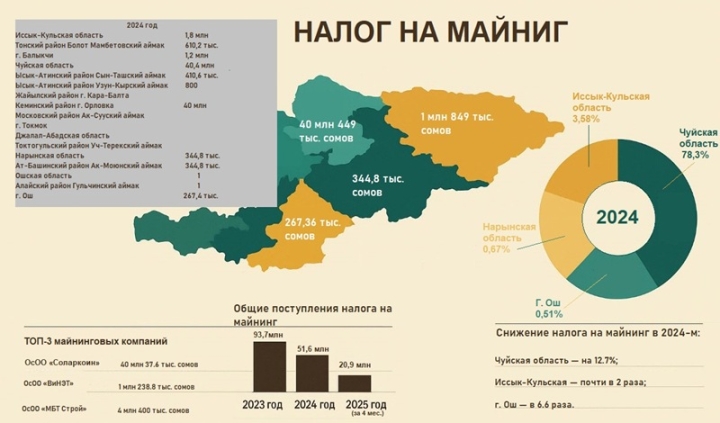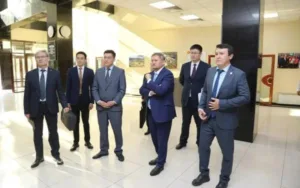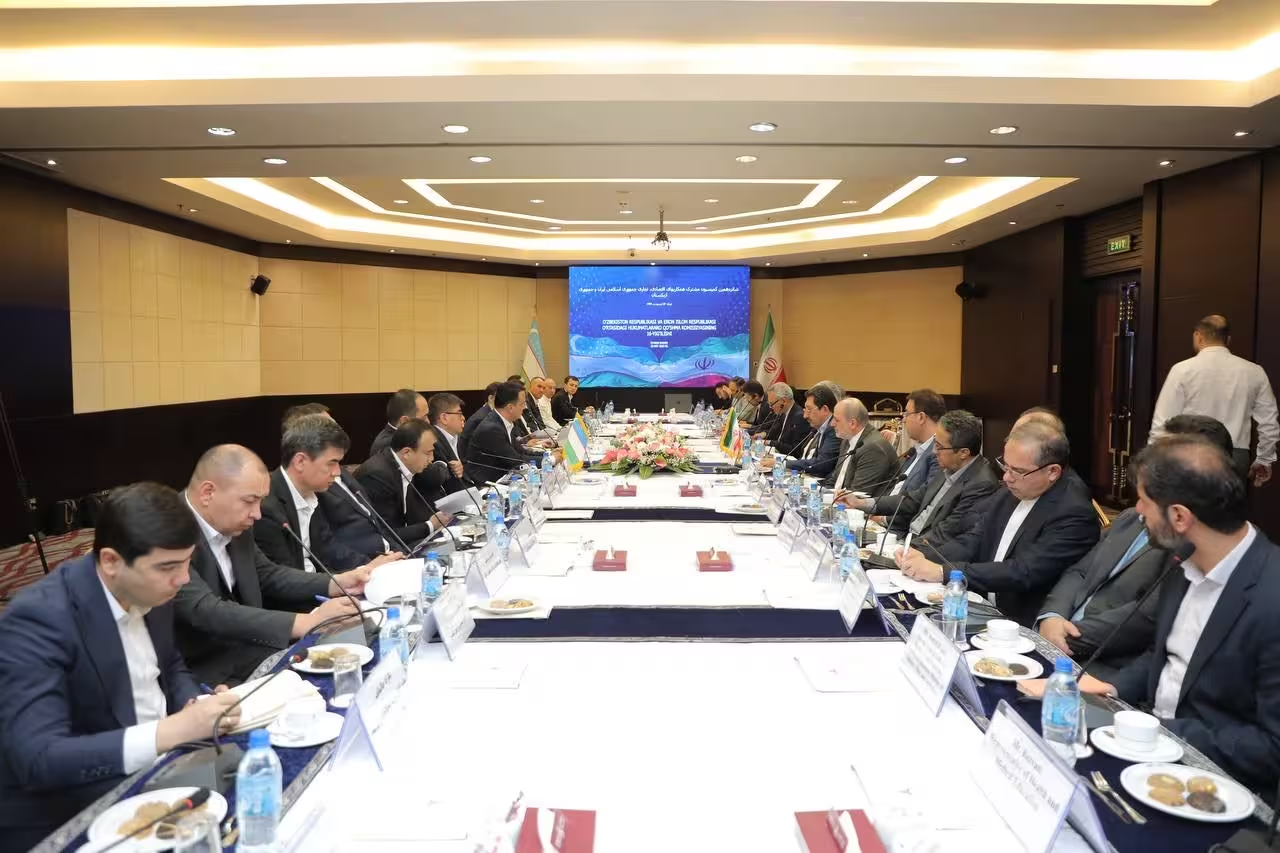New technologies and digitalization are rapidly developing around the world, creating new industries that do not require complex physical infrastructure. One of these areas was cryptocurrency mining. It is particularly attractive to emerging economies where access to low-cost electricity plays an important role. Although mining — is a digital activity, its environmental impact is very real, since crypto mining requires a lot of electricity, which means it leads to greenhouse gas emissions. Therefore, environmental and sustainable development issues are increasingly being raised in discussions about the future of cryptocurrencies.

According to the University of Cambridge, the annual energy consumption of the Bitcoin network is comparable to the total capacity of the entire Swedish energy system. At the same time, a significant part of the world’s electricity is still generated at coal, oil and gas thermal power plants, which aggravates the problem of global warming.
That is why the discussion about switching the cryptocurrency industry to green energy is increasingly being raised. In support of this initiative, the international structure Crypto Climate Accord — a digital analogue of the Paris Climate Agreement has been created, the goal of which is — complete decarbonization of mining.
Green potential of mining
While leading Western mining companies are only aiming to phase out non-renewable sources by 2030, Kyrgyzstan already offers a unique green advantage. Due to its geographical location, almost 40% of the water volume in Central Asia is formed in the river systems of our republic.
Rich in water resources, the Kyrgyz Republic generates about 90% of all electricity from hydropower — a clean and renewable energy source. Moreover, today, according to various estimates, only 10—11% of the country’s total hydropotential is used.
Thus, any mining farm operating in Kyrgyzstan automatically becomes part of the environmentally friendly crypto industry and mines truly green cryptocurrency.
More farms — less money
In 2024, mining taxes brought 51.6 million soms to our country’s budget — almost half as much as a year earlier. Officially, there are more farms, the geography has expanded, and companies are paying. But in reality, we see a reduction in payments in key regions where miners operate.

According to official statistics, the mining geography in the Kyrgyz Republic expanded in 2024, with the number of regions where mining farm activity was recorded growing from three to five. Naryn and Osh regions were added to the already well-known Chui, Issyk-Kul regions and the city of Osh. And in 2025 — and Jalal-Abad.
It would seem that this should have led to an increase in tax revenues. However, in reality, the opposite happened: if in 2023 the budget received 93.7 million soms from crypto mining, then in 2024 — only 51.6 million, that is, almost 1.8 times less.
The reason lies in the decline in the activity of already established mining centers. Farms that accounted for the bulk of revenue in 2023 saw their payments drop significantly in 2024:
- The Chui region, the country’s main mining hub, reduced payments by 12.7%;
- Issyk-Kulskaya — almost twice;
- Osh — 6.6 times.
Despite the fact that, according to the Ministry of Finance, miners paid almost 100 million soms to the budget in 2023, through the portal «Open Budget» it was possible to track the revenues of this tax by region by only 51.7 million — just over half.
In 2024, the situation improved markedly. It has already been possible to confirm 83.1% of the declared amount — 42.9 million soms out of 51.6 million. However, part of the revenues is also lost in the bureaucratic corridors between the Ministry of Finance, the State Tax Service and the portal «Open Budget».
How much does mining consume?
At the initial stage, the development of mining in Kyrgyzstan faced a number of serious obstacles. Firstly, due to the lack of a legal framework, pioneer companies operated in the grey area — without clear rules or regulation. Secondly, chronic energy shortages in the republic have become a serious barrier.
If the problem of the legal vacuum was solved thanks to the development of a regulatory framework for regulating virtual assets, then the shortage of electricity remains relevant. Today the deficit is estimated at approximately 1 billion kWh. To overcome it, the authorities are actively building new hydroelectric power stations, wind farms and solar stations, and also importing electricity from abroad.
Against this background, the emergence of new mining farms related to energy-intensive industries often causes a negative reaction. However, most often this is due to lack of awareness of the real state of affairs.
Thus, in the Kyrgyz Republic, the tax rate on mining is 10% of the cost of consumed electricity, and the tariff for miners last year was 5.58 soms per 1 kWh. Based on mining tax revenues, it can be calculated that crypto miners consumed about 92.5 million kWh in 2024.
«Subjects registered as mining tax payers are required to report for the entire volume of consumed electricity, both received from state hydroelectric power stations and from private generation sources», — the State Tax Service explained «to Akchabaru».
If you look at this nationwide, the share of miners in total energy consumption is negligible. In 2024, electricity consumption in Kyrgyzstan amounted to 18.2 billion kWh, which means miners accounted for only 0.51% of the total. For comparison, 75% of electricity is consumed by household subscribers — ordinary citizens.
Moreover, every kilowatt-hour sold to miners brings energy companies 6,138 soms. This amount consists of a base rate of 5.58 soms per 1 kWh and an additional mining tax of 0.558 soms for each kilowatt-hour consumed. As a result, last year the total amount of revenue from electricity consumed by miners, according to calculations, amounted to about 567.75 million soms: of which 516.15 million — payment for electricity and 51.6 million — tax revenues.
In other words, 1 kWh sold to miners brings in the same amount as the 2.5-5.5 kWh payment consumed by regular subscribers, depending on the current tariff. At the same time, from May 1, 2025, the tariff for miners will be increased to 6.06 soms per 1 kWh, which will further increase the profitability of this segment for energy enterprises.
The ability to sell electricity at commercially reasonable rates is critical to the sustainability of the energy sector. Let us recall that in 2023 the state was forced to take on the debts of energy companies, the amount of which exceeded 120 billion soms.
Not just consumers
Even with relatively modest volumes of electricity consumption, the mining market in Kyrgyzstan remains quite active. From 2021 to 2024, several players entered the country, many of whom were re-registered.
According to the Financial Supervision register, there are ten mining companies operating in the Kyrgyz Republic:
- «Satellite 2005» (re-registration — October 2024; founder and director — Adylbek Mirzamatov).
- «Business Drive» (August 2021; founders — Syimyk Mamatkanov and Mirbek Teshebaev).
- «MBT Stroy» (June 2023; founder — Alexey Zaitsev, director — Igor Mikhailyuk).
- «ExJWy Mining PTE» (2023; with foreign participation; founders— «ExJWY Power PTE LTD» and Zhu Yong).
- «BaiLeader» (September 2023; with foreign participation; founder — Bai Gunpu).
- «Xiamen Zhiasheng Engineering Machinari» (June 2024; founder — Asan Sadykov).
- «Technology Company «FenYuen» (August 2023; founder — Jia Libiao).
- «Spetsenergomontazh Kara-Balta» (April 2024; founder — Andrey Ivannikov).
- «ViNET» (August 2021; founder — Rakhatbek Irsaliev).
- «Solarcoin» (January 2023; with foreign participation; founders — LLC «NBTS KG», Tatyana Martynova and Lu Jincheng).
Interestingly, most of these companies are not officially registered as mining companies. Their main activity is — «other information technology activities», use of web portals or maintenance of electrical equipment. Some profiles are completely unexpected —for example, «Xiamen Zhiasheng Engineering Machinery» is officially associated with the production of metallurgical equipment.
However, a more in-depth analysis of the founders shows that miners in the Kyrgyz Republic — are not just energy consumers, but also energy producers.
Of the ten operating mining companies, six have connections through their founders with electricity generation companies.
For example:
- Adylbek Mirzamatov («Satellite 2005») is also the founder of LLC «Chatkal Zharygy» (hydropower), LLC «Kobuk 19» (thermal power plants) and LLC «Gulsha-21» (other power plants);
- the founders «ExJWy Mining PTE» are directly related to LLC «ExJWy Power PTE», which produces electricity at hydroelectric power plants;
- Asan Sadykov («Xiamyn Zhiasheng Engineering Machinari») owns shares in LLC «Metrum KG», LLC «Kyrgyz Energy Systems», LLC «SuLu» (all three operate in hydropower), as well as in LLC «Birimdik Resources Plus» (other types of power plants) and OJSC «Energy of the Future KG» (sale of electricity);
- Rakhatbek Irsaliev («ViNET»), through affiliated companies, participates in the projects of the Koisuuy hydroelectric power station, Ala-Bash hydroelectric power station, Talas hydroelectric power station, Chui hydroelectric power station, Tonskaya hydroelectric power station, Ak-Terek hydroelectric power station, Kochkor hydroelectric power station, as well as in other hydropower projects;
- Tatyana Martynova (founder «Solarcoin») is also a co-owner of LLC «Metrum KG», specializing in hydropower.
Thus, mining enterprises in Kyrgyzstan not only consume electricity, but also participate in its production or plan to generate electricity in the future by directly investing in the development of the country’s energy infrastructure.
Thus, today the majority of hydroelectric power stations associated with «VINET» through its founder, according to the portal «Open Budget», are working. For example, the following companies made payments through the budget in the amount of:
- Koisuui hydroelectric power stations — 36.5 million soms;
- Ala-Bash hydroelectric power stations — 14.6 million soms in 2023 and 1.03 million in 2024;
- Chui hydroelectric power stations — 1.7 million soms in 2025;
- Ton hydroelectric power station — 1.23 million soms in 2024;
- Kochkor hydroelectric power station — 346.1 thousand soms.
The company «Metrum KG», connected through its founders with two mining companies at once — «Xiamen Zhiasheng Engineering Machinari» and «Solarcoin», last year transferred 60.1 thousand soms to the budget. This may indicate the beginning of its work. Also, Asan Sadykov (co-owner «Xiamen Zhiasheng Engineering Machinari») is known to the public for the project to build a wind farm on Issyk-Kul. It is likely that part of the electricity generated from it could be sold to a mining farm.
Mining geography: where do they dig?
The Chui region remains a leader. Especially Orlovka, where he works «Solarcoin». In 2023-2024, it paid more than 84 million soms in mining taxes.

In general, in 2023, miners in the Chui region replenished the budget by 46 million 325.6 thousand soms. The lion’s share of this amount, almost 44 million, was contributed by the company «Solarcoin». But, in addition to it, five more farms operated in the region in 2023. One each in the Syn-Tash ayyl aimag (paid mining tax by 634.6 thousand soms) and Uzun-Kyr ayyl aimag (5.6 thousand soms) of the Ysyk-Ata district, one in the Ak-Suu ayyl aimag (20.5 thousand soms) of the Moskovsky district and one each in Tokmak (49.3 thousand soms) and Kara-Balta, where does it work «Spetsenergomontazh Karabalta» (1 million 617.2 thousand soms).
In second place in terms of the volume of mining tax paid, although this is significantly less than in the Chui region, are farms located in the Issyk-Kul region — 3 million 621.4 thousand soms. These revenues were provided by two farms, in the Swamps of the Mambetovsky ayilny aimag of the Tonsky district (1 million 746.8 thousand soms) and «VINET» in Balykchi (1 million 874.6 thousand soms).
And finally, in third place is Osh. According to the Ministry of Justice, only one mining company is registered in the southern capital — OJSC «Satellite 2005». And in 2023, she paid 1 million 769.6 thousand soms in mining taxes.
In 2024, farms appeared in Kyrgyzstan in the Ak-Moyunsky ayilny aimag of the At-Bashinsky district of the Naryn region, which paid 344.8 thousand soms to the budget, and in the Gulchinsky ayilny aimag of the Alai district of the Osh region. True, the company made a symbolic payment — 1 som.
As a result, the mining farms that were added in total last year paid relatively little in the form of taxes on their direct activities. Therefore, despite the expansion of the geography of miners’ work in Kyrgyzstan, this did not compensate for the decrease in payments from large enterprises.
However, despite the fact that 2025 has just arrived, it has all the prerequisites to become more successful in terms of the relationship between miners and the state, since a new player has already appeared on the legal market.
Newcomer from Jalal-Abad region. The farm is located in the Uch-Terek ayyl aimag of the Toktogul region. Most likely, we are talking about a company «MBT Stroy» that makes contributions in this particular aimag. In the first four months, it has already replenished the treasury by 9 million 76.5 thousand soms in the form of a tax on mining activities.
The volume of payments clearly indicates that this is a fairly large player. Its payments are almost 2.5 times higher than the tax deductions made «Satellite 2005» for the entire 2023, as well as the amount of taxes paid by miners in the Issyk-Kul region.
Also, the mining farm in Osh seems to be back in the game. Over the four months of this year, it has already paid 947.8 thousand soms to the budget in the form of mining taxes, which is 3.5 times higher than its payments for 2024.
Mining in Kyrgyzstan clearly demonstrates how digital technologies can be integrated into the country’s energy system. And, despite the risks, crypto farms are capable of not only consuming, but also generating income, including through participation in energy infrastructure. And given the willingness of miners to buy electricity at commercial rates, mining can play an important role in the energy transition of the republic.
Maria Indina («Akchabar»)




